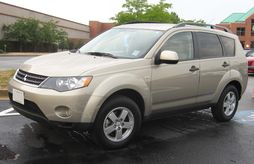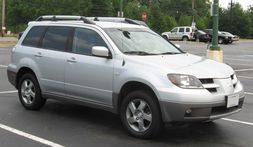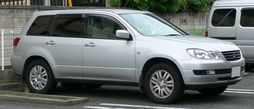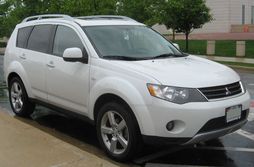The History Of Mitsubishi Outlander

The Mitsubishi Outlander is a compact crossover SUV manufactured by Japanese automaker Mitsubishi Motors. It was originally known as the Mitsubishi Airtrek when it was introduced in Japan in 2001, and was based on the Mitsubishi ASX concept vehicle exhibited at the 2001 North American International Auto Show. The ASX (Active Sports Crossover) represented Mitsubishi's approach to the industry wide XUV trend for retaining the all-season and off-road abilities offered by a high ground clearance and four-wheel drive, while still offering car-like levels of emissions, economy and size.
The original Airtrek name was chosen to "describe the vehicle’s ability to transport its passengers on adventure-packed journeys in a 'free-as-a-bird' manner", and was "coined from Air and Trek to express the idea of footloose, adventure-filled motoring pleasure." The Outlander nameplate which replaced it evoked a "feeling of journeying to distant, unexplored lands in search of adventure."
The second generation of the vehicle was introduced in 2005 and all markets including Japan adopted the Outlander name. It was built on the company's GS platform, and used various engines developed by Mitsubishi, Volkswagen and PSA Peugeot Citroën. PSA's Citroën C-Crosser and Peugeot 4007, which are manufactured by Mitsubishi in Japan, are badge engineered versions of the Outlander.
The Airtrek was first introduced to the Japanese market on June 20, 2001, priced from ¥1.7–2.3million. It offered a choice of either a 126PS (93kW) 4G63 2.0L or a 139PS (102kW) 4G64 2.4L GDI, mated to a standard INVECS-II 4-speed semi-automatic transmission. Both front- and four-wheel drive were available. The four-wheel drive version uses normal ("open") differentials for the front and rear axles, with a viscous coupling unit for the center differential. A high performance model, using a detuned version of the Mitsubishi Lancer Evolution's 4G63T 2.0L turbo, was introduced in 2002. The engine produced 240PS (180kW) and 343N·m (253lb·ft), although in export markets the Outlander version's output was reduced to 202PS (149kW) and 303N·m (223lb·ft).
The Outlander arrived in 2003, with a modified front grille and headlights which increased the overall length by approximately 130millimetres (5.1in), and the two models were manufactured in parallel thereafter. A version of the 4G64 powerplant was offered first, while a 4G69 2.4L SOHC MIVEC I4 producing 158PS (116kW) and 220N·m (160lb·ft), and the turbocharged 4G63T appeared in 2004. All had the option of front- or four-wheel drive.
In several South American markets it was known as the Montero Outlander, to benefit from an association with the strong-selling Mitsubishi Montero Sport.
On October 17, 2005, Mitsubishi launched the second generation model, dropping the Airtrek in Japan in favour of adopting the global name. It features a new DOHC 2.4L 16-valve MIVEC engine; INVECS-III continuously variable transmission (CVT), Mitsubishi's AWC system which features electronically controlled four wheel drive and stability control, on a stretched Mitsubishi GS platform. The North American version, powered by a newly designed 6B31 3.0L V6 SOHC MIVEC was shown in April 2006 at the New York Auto Show prior to its release in October the same year.
In its home market of Japan it was the best-selling SUV from October 2005 to March 2006, while in the U.S. market it achieved 1,694 and 2,108 sales in November and December 2006, the first two full months it was available; Mitsubishi ultimately hopes for at least 4,000 sales per month in the United States.
At the 2007 SEMA Show, the company displayed a Mitsubishi Evolander concept, powered by a 240kW (330PS) supercharged version of the vehicle's 6B31 V6 engine and equipped with suitably uprated suspension, brakes, wheels/ tires, body kit and interior. It is mooted that an Outlander Ralliart would closely mimic the mechanical specifications of this concept, although there is no indication that production has been approved.
The Outlander, which features Mitsubishi's RISE safety body, received a four star rating from the Euro NCAP car safety performance assessment programme.
Increased demand for the new Mitsubishi Lancer, and the consequent effects on the capacity of the company's Mizushima production facility, have obliged Mitsubishi to reassess production of the Outlander. In September 2007, they announced that from 2008, production of European market Outlanders would be transferred from Nagoya to its NedCar plant in the Netherlands, while the Citroën C-Crosser and Peugeot 4007 would have their production transferred from Mizushima to Nagoya.
In Chile, where the first generation is still sold as Outlander, the new model is badged Outlander K2.
(sources: Facts & Figures 2005, Facts & Figures 2008, Mitsubishi Motors website)
From Wikipedia, the free encyclopedia
More About Mitsubishi Outlander




|